Well we’re clearly in the bubble burst of online-video sites. Stage6 shut down, and Revver was sold. Who’s next?
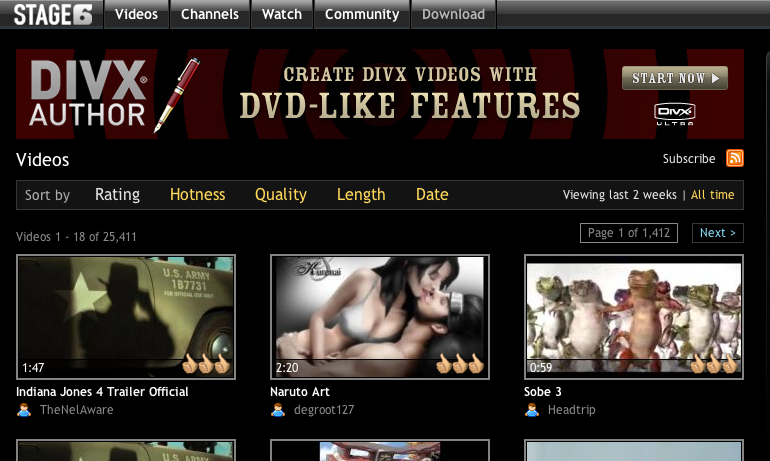
Well we’re clearly in the bubble burst of online-video sites. Stage6 shut down, and Revver was sold. Who’s next?

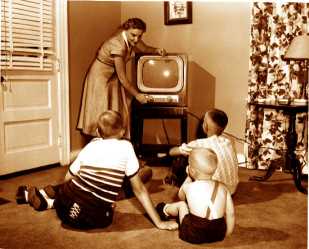 I’m going out on a limb here, but I predict that independent web-to-tv boxes will be (albiet perhaps temporary) an inevitable part of the pending collision between our television sets and Internet. We’re past that debate about whether TV or online-video will prevail. There will be a hybrid model, and quite frankly I can’t wait to consume my online-videos with the ease of TiVo surfing. I just don’t watch television anymore and the cable and telcom providers have made that an easy withdrawal.
I’m going out on a limb here, but I predict that independent web-to-tv boxes will be (albiet perhaps temporary) an inevitable part of the pending collision between our television sets and Internet. We’re past that debate about whether TV or online-video will prevail. There will be a hybrid model, and quite frankly I can’t wait to consume my online-videos with the ease of TiVo surfing. I just don’t watch television anymore and the cable and telcom providers have made that an easy withdrawal.
Months ago, I would have bet that cable and telcom monoliths could successfully dominate this space with their own connectivity, equipment, and customer base. But Verizon’s latest release of its Fios TV video interface has convinced me of otherwise. It’s rather hopeless, and we should expect nothing more.
Despite continued investments by cable (Comcast) and telcom (Verizon) providers — which includes fiber and expensive capital — they’re going to be dissintermediated in the short term. Sure they’re winning customers with competitive bundled deals for cable, phone and television. And they have a built advantage because we want a turnkey solution and it’s hard to bypass them unless you want a satellite. But they’re big, slow, and focused more on securing their market position than innovating.
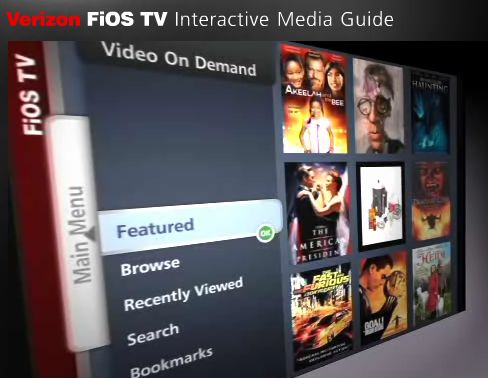 While the bundling (phone, TV and internet access) is quite economically tempting, the television ‘user experience’ is what real-estate agents call functional obsolescence– it’s a deal breaker. For the past year I’ve suffered through Verizon’s slow, counter-intuitive, buggy and frustrating television interface and would have canceled long ago but for my wife and kids’ desire to watch news and children shows. A few weeks ago, Verizon rolled out an entirely new interface, which is prettier but almost as convoluted. Comcast, last I checked, wasn’t much better. I miss my delightful, buttery TiVo experience, and have two TiVo units depreciating because I can’t figure out how to get them to play nicely with the Fios-mandated Motorolas. And I’m not willing or able to pay a third recurring fee: a TiVo service fee, in addition to my monthly TV bill and rental equipment toll. If only I could just dump the Motorola and pay Fios a cable fee alone.
While the bundling (phone, TV and internet access) is quite economically tempting, the television ‘user experience’ is what real-estate agents call functional obsolescence– it’s a deal breaker. For the past year I’ve suffered through Verizon’s slow, counter-intuitive, buggy and frustrating television interface and would have canceled long ago but for my wife and kids’ desire to watch news and children shows. A few weeks ago, Verizon rolled out an entirely new interface, which is prettier but almost as convoluted. Comcast, last I checked, wasn’t much better. I miss my delightful, buttery TiVo experience, and have two TiVo units depreciating because I can’t figure out how to get them to play nicely with the Fios-mandated Motorolas. And I’m not willing or able to pay a third recurring fee: a TiVo service fee, in addition to my monthly TV bill and rental equipment toll. If only I could just dump the Motorola and pay Fios a cable fee alone.
You see, Fios TV forces me to rent a Motorola media box (actually, I could rent a digital converter, but that doesn’t cost much less per month). I rent two of these stupid units (living room and bed room) and they communicate with each other like Hollywood stars in their 3rd month of marriage.
I expect a cable bill. But a monthly “rental toll” for a mandated unit is reminiscent of Ma-Bell charging $5 a month to my grandparents for a “model T”-like rotary phone (which everyone seems to overlook until the parents die, someone has to clean up the estate, and the children discover they’ve paid thousands in years of renting a phone that could have cost $2.99 at Walmart).
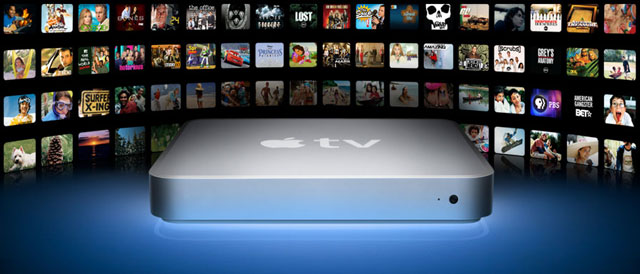 Meanwhile, I almost tossed my AppleTV months ago, but have recently been spending a lot more time using it. It cost about $300, there’s no recurring fee, and the interface is getting better. I can enjoy any video I download or import as an MP4 (and my handy VisualHub takes care of the conversions for videos I download elsewhere). More importantly, it’s how I’m beginning to consume a lot of my YouTube videos.
Meanwhile, I almost tossed my AppleTV months ago, but have recently been spending a lot more time using it. It cost about $300, there’s no recurring fee, and the interface is getting better. I can enjoy any video I download or import as an MP4 (and my handy VisualHub takes care of the conversions for videos I download elsewhere). More importantly, it’s how I’m beginning to consume a lot of my YouTube videos.
On the negative side, iTunes has its share of limitations: a paltry video-purchase selection via the iTunes store, a ridiculous rental service I won’t soon use again (after a “Live Free or Die Hard” expired before I ever started watching it), and this baffling confusion of trying to synch media across various iPods and Mac accounts.
And frankly, I’m quite sick of being deprived by Mac of sharing or viewing my purchased videos and movies– legally, across my own digitalia.
 That makes me so angry, I’ve starting to resort to getting movies via other mischievous means. Last night I even fell for a Google text ad that boasted a $35 one-time “free movie downloads for life” scam. For my impossible-to-refund fee, I received a special log-in website, password and instructions… which basically provided me a link to LimeWire (a free p2p tool). Caveat emptor I suppose. I was reminded of when, at the age of 9, I bought a “remote-control ghost: flies as high as 100 feet” from a comic book ad. Eight weeks later I received a white plastic bag, a balloon, and 100 feet of string. Even Sea Monkeys and the Ant Farm were better deals.
That makes me so angry, I’ve starting to resort to getting movies via other mischievous means. Last night I even fell for a Google text ad that boasted a $35 one-time “free movie downloads for life” scam. For my impossible-to-refund fee, I received a special log-in website, password and instructions… which basically provided me a link to LimeWire (a free p2p tool). Caveat emptor I suppose. I was reminded of when, at the age of 9, I bought a “remote-control ghost: flies as high as 100 feet” from a comic book ad. Eight weeks later I received a white plastic bag, a balloon, and 100 feet of string. Even Sea Monkeys and the Ant Farm were better deals.
But something promising occurred quietly in the past week. AppleTV pushed out an upgrade, and now my YouTube viewing is slightly closer to the experience of watching videos via YouTube.com directly.
Initially, YouTube viewing via AppleTV provided a fraction of the experience permitted on YouTube. I couldn’t even look at my subscriptions or sort recent videos by creator. This limited YouTube interface is part of the reason I dumped my iPhone after two weeks (AT&T’s poor connectivity was another reason). But now I can at least go beyond watching the top YouTube videos of the day. I can view a random subset of my subscriptions (for odd reasons, they only let me peer into my first dozen or so, which is a bit constraining when you’ve subscribed to 800 people).
If you’re not a YouTube addict, the AppleTV makes less sense, and Apple won’t soon penetrate the market with these units unless they improve the interface further, renegotiate failed content deals and partner with electronic manufacturers or bring down the unit price.
So what’s ahead in 2008?
![]() The more we surf online video the more savvy we become about content versus advertising.
The more we surf online video the more savvy we become about content versus advertising.
A marketer recently told me he was pleased by the impressions he got from a YouTube homepage advertising buy, but…” I finished his sentence for him.. “your featured video didn’t get a lot of views.”
I told him we’ve been trained that the YouTube featured video is an advertisement, and he said he was working on ways to produce a more provocative headline or thumbnail. This “learned ad blindness” (I just coined that) was true with Revver ads, where virgin viewers would click the end-frame ad out of curiosity while the regulars learned to move to the next video. Revver is now adopting overlays jam packed with what appears to be Google Adsense Ads. Meanwhile, Adsense itself is under performing. Jason Lee Miller of WebProNews wrote recently about performance declines of Google Adsense, and one of his theories is:
“People are ignoring ads at a higher rate, and this has been evidenced by eye-tracking studies, especially when the ads appear in the places they expect them to appear.” (Note: to reinforce Miller’s point, I’ve displayed an image tracker of where eyes go when viewing a Google search-results page… hot in the top of organic area and rather cold on the ads).
So what’s the solution? Is it constant rotation of ads so they masquerade as content or perpetually innovative ways to interrupt, arouse or tantelize? YouTube’s “videos being watched right now” is a combination of sponsored videos and popular ones. They’ve changed the name of this section several times, but I believe it remains an advertorial blend.
 That’s not the answer long term. Your most trusted sources of media (television, print, radio, web) usually make it abundantly clear what’s an advertisement and what’s content. Google pioneered this delineation by giving a color to ads while some engines continue to advantage advertisers in the “organic” listings with something called “paid inclusion” that creeps me out. The “advertorial” game, where advertisers sponsor what appears to be objective articles, is for the bottom feeders.
That’s not the answer long term. Your most trusted sources of media (television, print, radio, web) usually make it abundantly clear what’s an advertisement and what’s content. Google pioneered this delineation by giving a color to ads while some engines continue to advantage advertisers in the “organic” listings with something called “paid inclusion” that creeps me out. The “advertorial” game, where advertisers sponsor what appears to be objective articles, is for the bottom feeders.
My first job after college was for a small Georgetown newspaper where the editor literally put a small white fence between the editorial and advertising department. I proudly stood on the content side, and the newspaper went bankrupt in 9 months. It was what prompted me to attend business school and move to the marketing side. I’d need to shower more frequently, but I’d at least have some control of my destiny.
The solution to “learned ad blindness” (copyright Kevin Nalts) is making ads that appeal to viewers and targeting people based on relevancy. If I’m in the market for a car, I want your car ad. If I’m not, it better have dancing clowns, hot models and site gags. If watching videos about the new overpriced talking parrot toy in late November, I’m probably ready for a 20% Toys-R-Us ad. See my next post (Cherry Chocolate Rain) for an even better example of when advertising does indeed become content.
Initially advertisers were terrified by technology that would block ads — from FireFox plugins to TiVo remotes. I’d content the greater barrier is the technology of the human mind, which learns quickly to discriminate between valued content and noise.
Like my old boss used to say, “even an amoeba learns by repetition.”
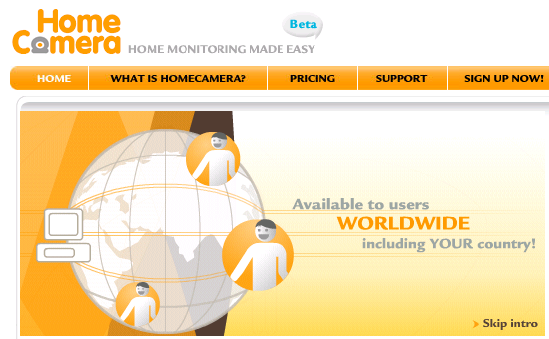 The nice thing about moderately promoted online-video contest is that your odds are really good.
The nice thing about moderately promoted online-video contest is that your odds are really good.
HomeCamera.com (a free home surveillance system) asked if I’d do a sponsored video. I offered instead to promote a contest if they’d give out some of the D-Link wireless cameras (see image below) that are being sold with HomeCamera preconfigured. They sent me a demo unit and I was impressed, since it’s not easy to do this with your webcam on your own.  The service is free now, and allows you to monitor your home from almost any device worldwide. I’m going to be interested to see how people tackle this video contest (see here for details). What would you do with HomeCamera? Spy on your kids? Track your home or pet? Check in on an aging parent?
The service is free now, and allows you to monitor your home from almost any device worldwide. I’m going to be interested to see how people tackle this video contest (see here for details). What would you do with HomeCamera? Spy on your kids? Track your home or pet? Check in on an aging parent?
So here’s my YouTube video promoting the HomeCamera contest, which runs through March 1. I’m not a judge, so – hey- I wonder if I can enter? Again- decent odds of winning a D-Link, and the grand prize is a flight to Singapore. Oh- and accommodations included for up to 4 nights. They’ll even toss in a return flight.

Marketers debate whether they should engage in online video, but there’s simply no excuse for not paying attention to what’s being said about your brand. There are good services that can do comprehensive audits (such as Buzzmetrics). But here’s the poor-man’s solution…
Subscribe to your brand’s name on YouTube. If you’re Coke and you’re not at least scanning videos that are tagged with the word Coke, then you may miss something important. It’s as simple as registering on YouTube and going to your subscriptions. Then enter your brand name in the “tag” section, and you’ll have videos waiting for you if they use your name in the tags.
There are other services doing more comprehensive, advanced and ongoing monitoring by turning speech into text, and then analyzing the content in sophisticated ways. But this is a nice place to start. It’s as easy as setting a “Google Alert” for your brand name to ensure that news and major blog posts aren’t missed.
 Oh it’s so rare when someone writes an intelligent article about online video (aka viral) marketing. And it’s pretty funny when you’ve never heard of the author but she happens to work for the digital agency you employ in your day job.
Oh it’s so rare when someone writes an intelligent article about online video (aka viral) marketing. And it’s pretty funny when you’ve never heard of the author but she happens to work for the digital agency you employ in your day job.
Anyway, here’s “Strategies for Making Video Ads Go Viral,” by Christine Beardsell (Digitas) via ClickZ. Christine explains paid and organic “seeding” of videos, which is not very well understood. She references two companies I hadn’t heard about: Kontraband’s The 7th Chamber and Viral Manage, which apparently seed videos, and offer tiered plans that include viral tracking and blog/forum seeding.
She also observes that a little money can go a long way with smaller video sites, and I’ve also found that to be true. I once got a promotional video past one million views by throwing a modest media buy to a second-tier site for some premium placement.
I’m not sure I agree that online video banners aren’t effective. In general, it’s true that banners are ignored. And auto-play banners are repulsively annoying. But I do believe there’s a role for embedded video in interactive, rich media ads. I found her thoughts about RSS and videos interesting, but caution people from thinking too many people will RSS for commercial videos. Get a well known YouTuber to mention your brand and you’ll get exponentially more visibility for far less money than your agency will charge for a FedEx.
 Next New Networks is debuting an online-video show about online video. Googleburn, which appears each Wednesday is:
Next New Networks is debuting an online-video show about online video. Googleburn, which appears each Wednesday is:
“the sting in your eyes when you’ve been ogling online videos all night and it’s 6 AM on Monday and oh dear lord you can’t see anything because the Internet blasted you with whiteout,” says host Nick Douglas in the show’s first blog.
Using vocabulary matched only by Entertainment Weekly’s Owen Gleiberman, NewTeeVee’s Jackson West says the show is “slightly warped yet smartly erudite sensibility and a disaffected delivery.”
 This week’s spoof is well timed, as it features an interview with the sunglasses of Australian party thrower Corey Delaney (Worthington), who was widely seen on YouTube, in this embarassing interview. Embarassing, I think, for the host who asked loaded questions, lacked objectivity, nagged, and became part of the story (must have missed that “Intro to Television News” course in college, honey). I thought this was a prank at first, but it might well be real.
This week’s spoof is well timed, as it features an interview with the sunglasses of Australian party thrower Corey Delaney (Worthington), who was widely seen on YouTube, in this embarassing interview. Embarassing, I think, for the host who asked loaded questions, lacked objectivity, nagged, and became part of the story (must have missed that “Intro to Television News” course in college, honey). I thought this was a prank at first, but it might well be real.
My BubbleGumTree Show, of course, is going for a more retrotarded angle on online video, featuring the interesting people of the space. Watch for a debut with Mark Day Comedy next week.
This “online video shows about online video” arena is starting to remind me of the short-lived websites that featured the best websites back in the late 90s. But it will be fun while it lasts. Via Mike Abundo’s Inside Online Video).
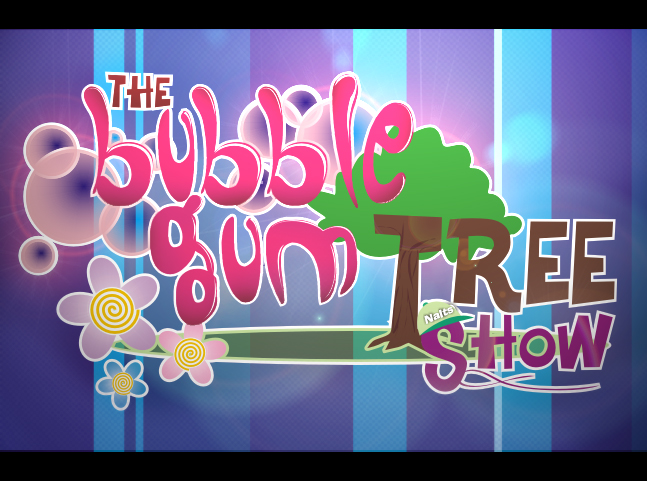 Had enough of horrible big-media interviews of your favorite online-video “weblebrities”? The same questions over and over? The 7 hours you spend, as a video creator, meeting with a television network, only to find your interview has been reduced to a 12-second soundbite?
Had enough of horrible big-media interviews of your favorite online-video “weblebrities”? The same questions over and over? The 7 hours you spend, as a video creator, meeting with a television network, only to find your interview has been reduced to a 12-second soundbite?
Well it’s time for The Bubblegum Tree Show! Yey! (See trailer).
It’s my new weekly show that will feature 50 of the most interesting (not necessarily the most popular) online video personalities in 2008. There is, of course, no shortage of shows that feature online-video creators. In fact I also do one for Metacafe called Metacafe Unfiltered. And then there’s Veoh’s Viral.
But this one’s different. You see, there’s bubblegum. The interviewed guest will be chewing gum, and send it to me at the end. Next, the gum will be affixed to the official “Bubblegum Tree,” which eventually will be populated by dozens of pieces of chewed gum (each beside the name of its weblebrity chewer). The show is designed to be fast, quirky, informal and interesting. The balance I’m trying to establish is making it cheeky, but giving people a real glimpse of the creator’s personality.
Subscribe now (only 25 elite subscribers as of this post), and be the first to catch the premier. Who will be first? CharlesTrippy? MarkDay? LisaNova? We’re after all of them. And if you’re an interesting online-video personality with a fat talent agent, send them our way via “bubblegumtreeshow dot com at g mail.” Because before long getting booked on The Bubblegum Tree Show will be like trying to get your book on Oprah (a woman who has a television show).
More research about online-video and television viewing. This Harris study tells us so much and yet so little. What I was hoping (based on the lead) is that it would talk about how online-video is cannibalizing, if at all, television viewing. Certainly for me I spend far more time watching video on my monitor than my overpriced HDTV.
Via Reuters. By Claire Sibonney; Editing by Patricia Reaney.
To create buzz as it nears submission deadlines, The Webby Awards announced recently the “Top 12 Most Influential Online Videos of All Times.” Our guess is that they were shooting for 12, but got into a heated debate and decided to toss two more in there.